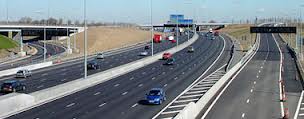A two-year experiment by the Danish Road Directorate shows accidents have fallen on single carriageway rural roads where the speed limit was raised.
Accidents have also fallen on motorways where the speed limit has been increased.
Since the speed limit on some streatches of two-way rural roads was increased from 80 to 90 km/h (50 -56mph), accidents have decreased due to a reduction in the speed differential between the slowest and the fastest cars. This has resulted in less overtaking. The slowest drivers have increased their speeds, but the fastest 15% drive one km/h slower on average, despite the higher limit. While the average speed remains similar to before, the speeds are more homogeneous on the roads in question.
On sections of motorway where the speed limit was raised from 110 to 130 km/h (68-81mph) nine years ago, fatalities also decreased.
The research will continue until 2015, when the full results will be published.

